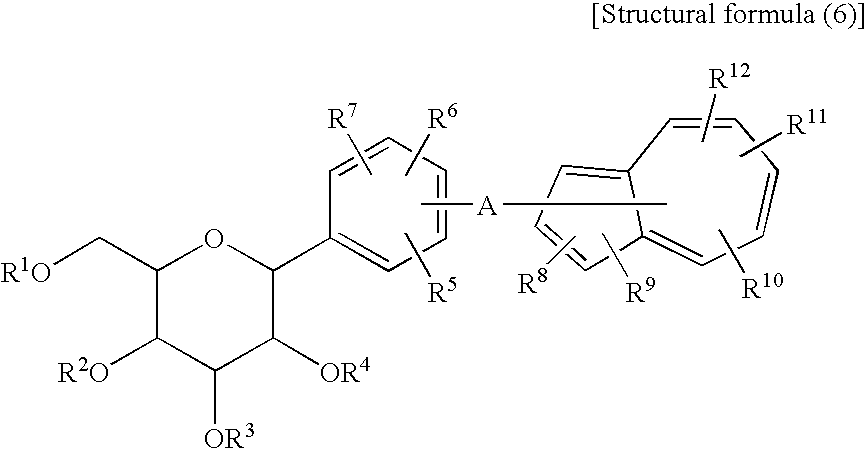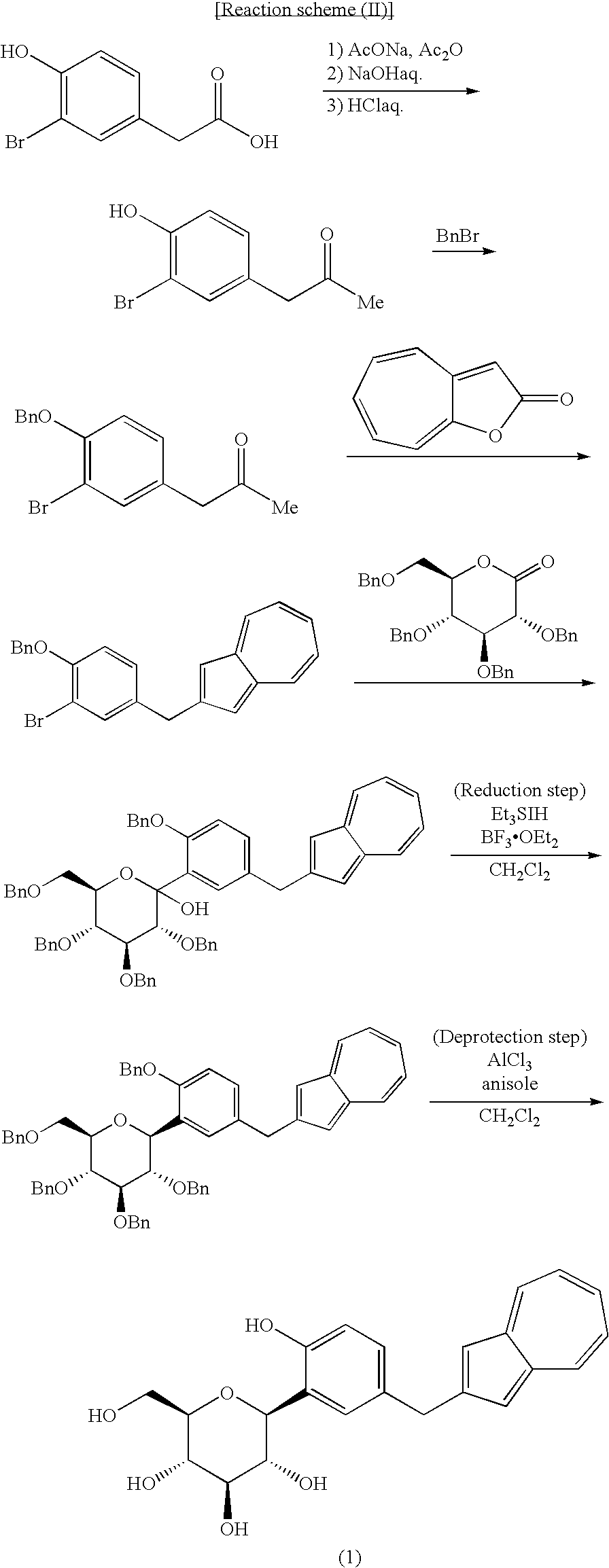Process for Production of Azulene Derivatives and Intermediates for the Synthesis of the Same
a technology of azulene and azulene, which is applied in the field of process for producing azulene derivatives and intermediates for the synthesis of the same, can solve the problems that the use of chlorine-containing solvents has not been fully satisfactory industrially, and achieves the effects of low cost, high yield and simple operation
- Summary
- Abstract
- Description
- Claims
- Application Information
AI Technical Summary
Benefits of technology
Problems solved by technology
Method used
Image
Examples
reference example 1
Synthesis of 1-(3-bromo-4-hydroxyphenyl)acetone
[0046] Sodium acetate (50.5 g) was added to an acetic anhydride (100 ml) solution of 3-bromo-4-hydroxyphenylacetic acid (28.5 g). The mixture was refluxed for 21 hours with heating. The reaction mixture was returned to room temperature and was adjusted to pH 11 by adding a 20% aqueous sodium hydroxide solution, and then the mixture was refluxed for 1 hour with heating. The reaction mixture was returned to room temperature and was adjusted to pH 6 by adding a 10% aqueous hydrochloric acid solution. The whole was extracted with ethyl acetate. The organic layer was washed with water, a saturated aqueous sodium bicarbonate solution and saturated brine, and dried over anhydrous sodium sulfate. After filtration, the solvent was distilled off under reduced pressure. The residue was purified by silica gel column chromatography (ethyl acetate-n-hexane) to obtain 1-(3-bromo-4-hydroxyphenyl)acetone (22.2 g, yield=79%).
reference example 2
Synthesis of 1-[4-(benzyloxy)-3-bromophenyl]acetone
[0047] To a solution of 1-(3-bromo-4-hydroxyphenyl)acetone (4.0 g) in DMF (40 ml) were added potassium carbonate (2.7 g) and benzyl bromide (2.3 ml). The mixture was stirred for 6 hours at room temperature. The reaction mixture was poured into water, and the whole was extracted with ethyl acetate. The organic layer was washed with water and saturated brine and then dried over anhydrous sodium sulfate. After filtration, the solvent was distilled off under reduced pressure. The resulting residue was purified by silica gel column chromatography (ethyl acetate-n-hexane) to obtain 1-[4-(benzyloxy)-3-bromophenyl]acetone (3.65 g, yield=66%).
reference example 3
Synthesis of 2-[4-(benzyloxy)-3-bromobenzyl]azulene
[0048] Pyrrolidine (1.9 ml) and magnesium sulfate (2.74 g) were added to a solution of 1-[4-(benzyloxy)-3-bromophenyl]acetone (3.65 g) in diethyl ether (30 ml). The mixture was stirred for 12 hours at room temperature. After filtration, the solvent was distilled off under reduced pressure and the residue was dried under reduced pressure. The resulting residue was dissolved in ethanol (30 ml) and 2H-cyclohepta[b]furan-2-one (0.5 g) was added to the solution. The mixture was refluxed for 8 hours with heating. The reaction mixture was concentrated and the resulting residue was purified by silica gel column chromatography (ethyl acetate-n-hexane) to obtain 2-[4-(benzyloxy)-3-bromobenzyl]azulene (0.84 g, yield=61%).
PUM
| Property | Measurement | Unit |
|---|---|---|
| temperature | aaaaa | aaaaa |
| temperature | aaaaa | aaaaa |
| temperature | aaaaa | aaaaa |
Abstract
Description
Claims
Application Information
 Login to View More
Login to View More - R&D
- Intellectual Property
- Life Sciences
- Materials
- Tech Scout
- Unparalleled Data Quality
- Higher Quality Content
- 60% Fewer Hallucinations
Browse by: Latest US Patents, China's latest patents, Technical Efficacy Thesaurus, Application Domain, Technology Topic, Popular Technical Reports.
© 2025 PatSnap. All rights reserved.Legal|Privacy policy|Modern Slavery Act Transparency Statement|Sitemap|About US| Contact US: help@patsnap.com



